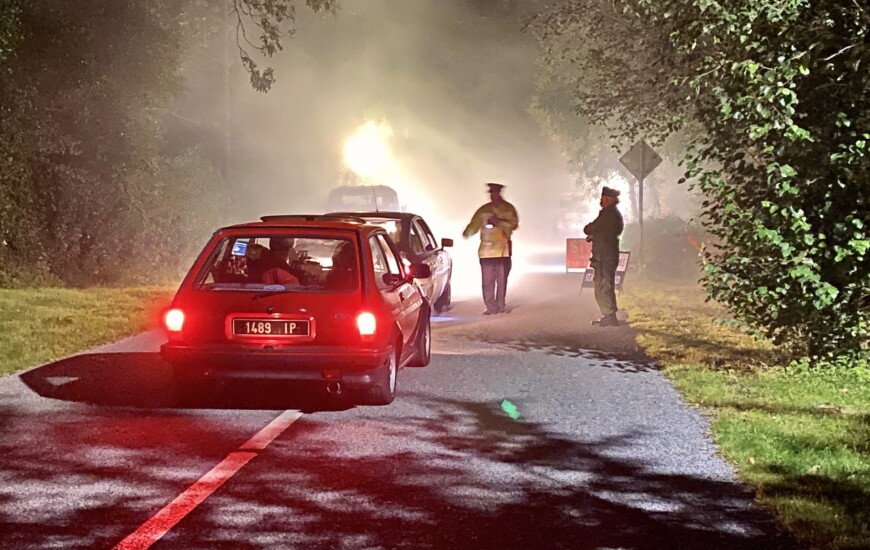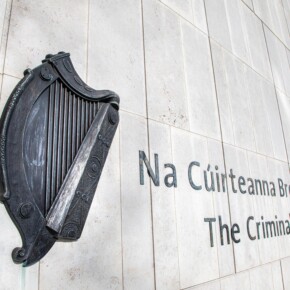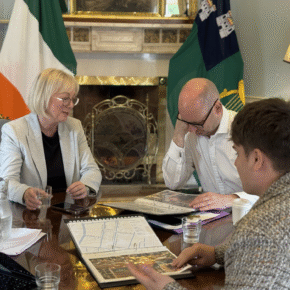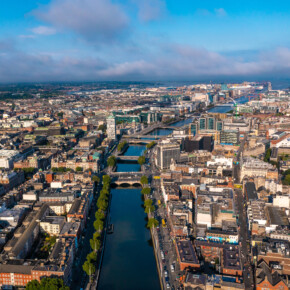Santry director on showing The Troubles from a Northside perspective
Mike Finnerty 28 Feb 2024
The Troubles has been a source of inspiration for directors from Paul Greengrass to Steve McQueen to Dublin’s own Jim Sheridan, and now Santry man Luke Hanlon is the latest director to tell a story amid the backdrop.
The Troubles: A Dublin Story tells the story of two working-class brothers from Dublin’s Northside who are drawn into The Troubles following the death of Bobby Sands in 1981.
We posed the question to Hanlon as to why he wanted to tackle such well-established material, and he said he wanted to tell the story from his own lens; that of a working-class Dubliner.
“I grew up a little council estate in Santry; you go over that wall, it’s Coolock, you go over that wall, it’s Ballymun, and we all kind of mixed. I drank in Finglas, I trained and boxed in Ballymun, and it was like all these communities are mixed together.”
Hanlon said he was inspired by his upbringing in making the film, which he wrote and directed.
“There were a lot of people who were republicans in the area where I grew up. They were in the pub, neighbours, people you’d know personally.”
“They looked nothing like what I would see on the TV or in the movies of what republicans were like. These people weren’t villainised or lionised; they were just ordinary people. I wanted to tell that specific story.”
Hanlon said he didn’t want to show “the villain, the hero, the rebel, the patriot,” he wanted to show, in his words, “the boring ordinary man, the footsoldier.”
There is a real sense of verisimilitude with the film; despite the film having a budget of around €15,000 it is true to life in terms of the vehicles used, the clothes worn and the production design.
He said “when you have no money, it frees you up to think outside the box. For example, my girlfriend is a production designer and we said one day ‘we need a house, how do we find it’?”
Hanlon looked on daft.ie to find the cheapest house possible and said that it was a valuable resource for any budding filmmakers.
“I’d look for the lowest energy rating that shows the house hasn’t been done up in so long, we’d go to the guy who owns it and pay then €50 a week for the house. We’d move into the house, do it up, and shoot there.”
The film uses vehicles from the era, and Hanlon relied on connections and a bit of luck and goodwill to secure the goods.
“I’d reach out to people, you’d tell them you have no money, but 90% of people want to be part of a movie. It’s a very lovely country we live in. There are strangers that are like ‘yeah, we’ll help you out.”
Hanlon recalls needing a tank for a scene in the film that depicts a checkpoint crossing, and he said his source was able to secure a tank from Cork.
He said his source turned out to be a former member of the military who wanted to help out in the production.
“One of them was a commander and he said ‘this is how you do a checkpoint; the policeman goes here, the soldier goes here’ and they loved being able to take part in it.”
Hanlon said he knew what he wanted to depict on screen, and it was a matter of “hard graft” to get the film over the line.
Considering the subject matter of the material, Hanlon was asked if he was a political filmmaker.
Italian filmmaker Gillo Pontecorvo’s 1966 film The Battle Of Algiers was cited as an inspiration by the Provisional Irish Republican Army, as well as the Black Panthers and the Baader-Meinhof group.
The film, cited as a favourite by Paul Greengrass of the Bourne franchise and director of the 2002 drama Bloody Sunday, looms large over any film that looks to depict urban warfare.
When asked if he considers himself a political filmmaker in the style of Pontecorvo or Loach, Hanlon replied “I don’t want to tell the audience how to think.”
“A great film presents a situation, stands back, and lets the audience decide. The best feeling is when two people are walking out of your film arguing.”
“I think it is a statement in itself in 2024 to not say anything. Anyone can talk about politics these days; I have a platform so if I can make them happy in all this misery then that’s what’s important.”
Hanlon said that while the likes of the Good Friday Agreement and the Michael Collins period of Irish history has been depicted, he wanted to depict the working-class Northsider perspective of The Troubles.
“The IRA has been done to death, I’m aware of that, I kept to the core of a Dublin story. I put it in the title.”
“From my point of view, The Troubles was UTV and seeing people dying every day, then I see someone in the local pub that’s in the IRA and you think ‘he’s never been to the North’; it was two different worlds.”
The Troubles: A Dublin Story is on DVD and Digital now.











